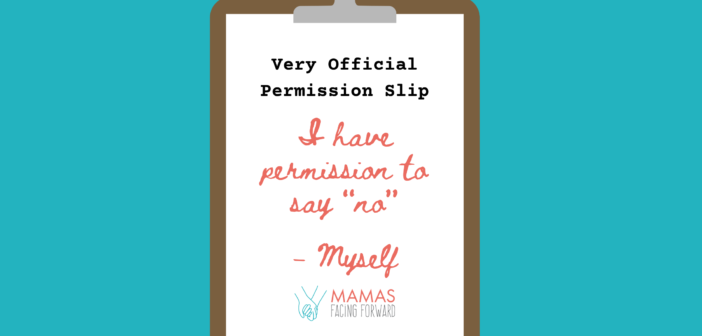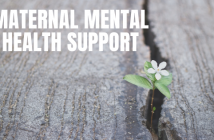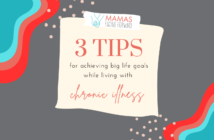No.
How can two little letters feel so challenging to say? Saying “no” when someone makes a request of you can feel so uncomfortable. Or, depending on who is doing the asking, sometimes it feels downright impossible.
Why Saying “No” Is So Challenging
As children, most of us spent our formative years learning how to say “yes” to our parents and teachers and other adult expectations. While obviously it’s important for children to listen to the adults in their lives, advocating for yourself is a learned skill that many of us were simply never taught. Society also tends to place extra expectations on women to be polite, accommodating, and nurturing, which can make it even more difficult for women to overcome feelings of guilt and say “no” when they need to.
You may also worry about how others will see you if you decline their request. You don’t want people to think you are rude or selfish, you don’t want to disappoint friends and loved ones, and you don’t want to burn any bridges. As social creatures, we work hard to preserve our relationships. And, on the flip side, it can feel really good to be needed. Not to mention that sometimes we really do want to say “yes” because we don’t want to miss an opportunity or special event.
What Happens If You Always Say “Yes”
When it feels uncomfortable to say “no,” you might default to “yes” – even if that answer leaves you with responsibilities that you aren’t genuinely interested in. Accepting every request leads to a demanding schedule and overflowing to do list, which can make you feel exhausted, resentful, irritable, or anxious. Saying “yes” when you would prefer to say “no” can also be a subliminal message to yourself that your own priorities don’t matter. This can have a negative impact on your health, both physically and mentally. It’s hard for anyone to function when they don’t have time or space to rest, recharge, or occasionally be spontaneous.
Learning to say “no,” at least some of the time, is one of the best skills you can develop if you want to live a well-balanced life and have more authentic relationships. That one small word can give you more control over your time and energy, while helping you prioritize the things that are actually important to you. Always keep in mind that your needs are important too, and the only person who needs to be ok with your answer is you. Brené Brown, who researches vulnerability, shame, courage, and worthiness, uses the mantra “choose discomfort over resentment.”
How to Work On Saying “No”
If you’re someone who defaults to “yes,” it can be challenging to get started, but here are a few ideas for exercising your “no” muscle:
Get clear about your priorities. Take some time to think about what is actually important to you: what are your core values, beliefs, and goals? Does saying “yes” actually align with your priorities? Will it bring your joy or prevent you from focusing on something more important? Clarifying where and with whom you want to invest your limited time and energy can help you say “no” with more confidence. Remember, having an opening on your calendar doesn’t mean you need to fill it. Saying “no” to something now reserves your ability to later say “yes” to something that better fits your priorities.
Create boundaries. Exercising your “no” muscle helps you create better personal boundaries in your life. Your actions – and how you respond to requests for your time – teach people how you want to be treated. If you allow someone to cross your boundaries, you’ll end up burdened with unrealistic expectations and more responsibility than you can handle. When you focus on your boundaries, you’ll become more willing to follow your gut when you know “yes” isn’t the best answer.
Rehearse your lines. If saying “no” feels like an impossible task, choose some low-impact situations to start flexing that muscle. Try it in front of a mirror or when the grocery store asks if you’d like to add a small donation. You can also prepare softer ways to decline that don’t actually include the word “no” such as: “not today, thanks” or “unfortunately, I can’t take that on right now” or “sorry, my plate is full.”
Let them know it’s not personal. You can decline a request while still being kind, courteous, and respectful. Try beginning your “no” with a statement of appreciation, such as: “thank you for thinking of me” or “it means a lot that you want me there.” This lets the other person know that you value their effort or event, but you simply aren’t available at the moment.
Set an example for your kids. Kids need to learn about healthy consent and personal boundaries. According to the Washington Post, “there’s a misconception that ideas about consent and bodily autonomy should be lumped in with sexual education, but that’s actually far too late. Healthy boundaries apply to so much more than just sex or partnership, and we should begin teaching our children as early as possible.” Your kids see you as a model for their behavior, so as you make your own values a priority or politely decline an invitation, kids can start to learn how to set healthy personal boundaries in their own lives.
Ask for support. Even with everything above, saying “no” and setting boundaries can be really difficult – more so if you are also struggling with self-esteem, depression, anxiety, or trauma. Don’t hesitate to ask a trusted friend or family member for help standing your ground as you practice. It also may be helpful to reach out to work with a therapist on the issue, if that’s an option for you.
While saying “no” might feel very uncomfortable at first, it should get easier with time and practice. And, as you make this effort to defend your own time and energy, you’ll be more able to focus on the things that truly bring you happiness.




